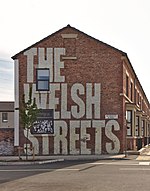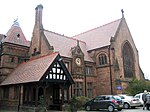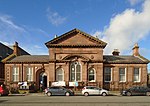The Belvedere Academy
1880 establishments in EnglandAcademies in LiverpoolEducational institutions established in 1880Girls' schools in MerseysidePeople educated at The Belvedere Academy ... and 3 more
Schools of the Girls' Day School TrustSecondary schools in LiverpoolUse British English from February 2023
The Belvedere Academy is an all-ability state-funded girls’ Academy secondary- formerly independent- school in Liverpool, England. Its predecessor, The Belvedere School, was founded in 1880 as Liverpool High School. It is non-denominational, non-feepaying, and one of the 29 schools of the Girls' Day School Trust. In September 2007 it became an Academy, as one of the first two private schools in the UK to do so.
Excerpt from the Wikipedia article The Belvedere Academy (License: CC BY-SA 3.0, Authors).The Belvedere Academy
Belvidere Road, Liverpool Dingle
Geographical coordinates (GPS) Address Phone number Website External links Nearby Places Show on map
Geographical coordinates (GPS)
| Latitude | Longitude |
|---|---|
| N 53.3852 ° | E -2.9574 ° |
Address
The Belvedere Academy
Belvidere Road 17
L8 3TF Liverpool, Dingle
England, United Kingdom
Open on Google Maps










